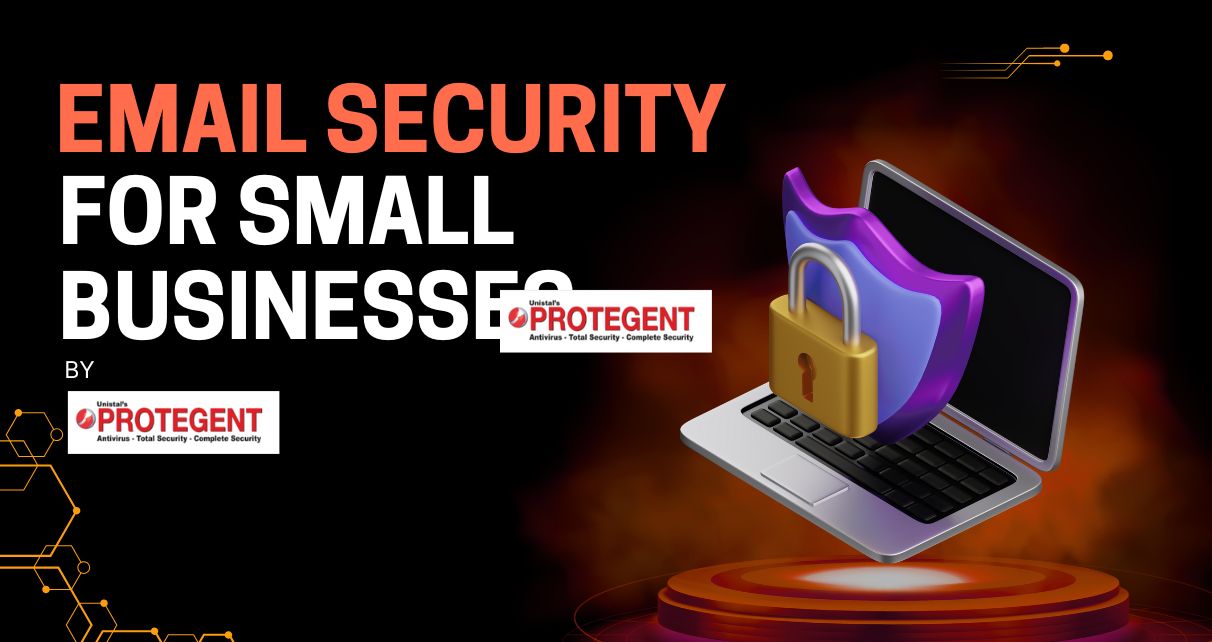
Your Inbox Could Be Your Biggest Business Risk in 2025. Are You Prepared?
Let’s begin with a simple question—when was the last time you checked your spam folder?
Chances are, it’s full of unsolicited promotions, bank fraud warnings, shipment updates you never requested, and “urgent” documents waiting to be downloaded. Most of us delete them without a second thought. There are times, however, when one of those emails makes it through to your primary inbox, looking clean, legitimate, and even familiar.
That one email—if clicked—can paralyze your business operations.
In 2025, this is no longer an edge case. It’s happening daily, and small and mid-sized businesses (SMBs) across India are among the hardest hit.
The Evolving Face of Email Threats in India
Email remains the most common and cost-effective form of business communication. But it’s also the most frequently exploited attack vector in the digital age.
Email isn’t just a messaging tool—it’s a gateway to sensitive data, payment details, login credentials, and business-critical workflows. And that’s exactly why attackers love it. With minimal effort and maximum reach, phishing emails, malware attachments, spoofed domains, and social engineering campaigns are now embedded into our daily communication patterns.
According to Barracuda Networks, out of 670 million emails analyzed in February 2025, 1 in every 4 was either spam or malicious. These weren’t always obvious scams—many came from what appeared to be legitimate sources, using carefully crafted subject lines and real company logos.
- 87% of malicious attachments were executable files (.exe) meant to install malware or ransomware.
- 23% of malicious HTML files were used to harvest login credentials—usually by mimicking cloud services like Google Drive or Microsoft 365.
These emails are often short, urgent, and targeted. A fake invoice. A spoofed supplier. A delivery confirmation. One click, and the damage begins.
The majority of these attacks are no longer scattergun campaigns—they’re targeted, customized, and sometimes even AI-generated to mimic trusted senders and regional language cues.
And while metro cities remain hotspots, attackers are also moving into tier-2 and tier-3 regions, where digital infrastructure is rising, but awareness is still catching up.
India’s Escalating Email Threat Landscape: The Numbers Tell a Grim Story
India is no longer a passive observer in the global cybercrime scene. It’s at the center of it.
Key Insights:
- A total of 79 million phishing attacks were detected in India in 2023, ranking third in the world, only behind the US and the UK. (TOI & Business Standard)
- Over 1,172 phishing domains targeting Indian users were detected in H1 2025. (NTRO, Fortinet)
- In Bengaluru, India’s tech capital, cybercrime cases jumped from 9,940 in 2022 to 17,623 in 2023, a 77% increase. Rural areas reported a doubling of phishing-related complaints in the same period. (The New Indian Express)
- According to Trend Micro’s 2025 Cyber Risk Report, India contributed 6.9% of all global email threats in 2024—more than 1.03 billion threats, accounting for nearly 24% of Asia’s total. (Media Brief)
These aren’t just statistics. They’re red flags. And they’re growing bigger.
Why Small Businesses Are Easy Targets
While large enterprises invest heavily in cybersecurity infrastructure, most small businesses are working with limited IT budgets and lean teams. That makes them an easy target.
Common vulnerabilities in Indian SMBs:
- Lack of email authentication protocols (SPF, DKIM, DMARC)
- Shared logins across departments, increasing the risk of credential leaks
- No formal cybersecurity training for employees
- A lack of threat detection tools or outdated antivirus software
- Limited awareness about phishing, malware, and ransomware tactics
Attackers exploit these gaps using simple but effective techniques—sending phishing emails designed to trigger a sense of urgency, impersonating bosses or vendors, and attaching files labelled “Invoice”, “PO”, or “Urgent Payment”.
A study by Hoxhunt found that 95% of data breaches are caused by human error, and 95% of those occur as a result of phishing emails.
It’s not just the loss of data that stings—it’s the loss of trust, operational downtime, legal consequences, and the massive effort needed to recover.
What Happens When One Email Slips Through?
Let’s say someone from your accounting team clicks on a spoofed invoice link. Within seconds:
- Malware gets installed
- System files are encrypted
- Login credentials are silently harvested
- The attackers gain access to sensitive customer information or business systems
In many cases, companies are locked out of their own data, forced to either pay a ransom or rebuild from scratch. For small businesses, this could be the difference between survival and shutdown.
Why Email Security Should Be Your Top Priority in 2025
Securing your inbox is no longer optional—it’s business-critical. Email-borne attacks are evolving every month, often driven by automation and AI-generated phishing content that mimics writing styles, language, and even internal communication patterns.
Despite these growing threats, only 7% of Indian organizations are considered fully prepared to counter modern cyberattacks. (Cisco, 2024)
If that’s not a wake-up call, what is?
Practical Email Security Measures for Indian SMBs
Cybersecurity doesn’t have to be complex or expensive. It needs to be intentional and consistent. Here’s what every small business should adopt immediately:
1. Enforce Two-Factor Authentication (2FA):
Protect email accounts with a second layer of verification to block unauthorized access, even if credentials are leaked.
2. Deploy Email Authentication Protocols:
Use SPF, DKIM, and DMARC to prevent spoofing and email impersonation.
3. Invest in Security Awareness Training:
Regularly educate employees about phishing techniques, suspicious attachments, and social engineering tactics.
4. Use Endpoint Protection with Email Scanning:
Make sure you have an antivirus software that includes real-time email monitoring and malware detection capabilities.
5. Backup Critical Data Regularly:
In case of a breach or ransomware attack, having accessible, offline backups can save your business.
How Protegent Antivirus Software Supports Email Security
When it comes to securing small businesses, Protegent Antivirus Software is designed to address precisely these challenges—without requiring a dedicated IT team.
Here’s how Protegent helps:
- Real-Time Email Scanning: Detects and blocks malicious attachments and phishing links before they reach the inbox
- Behavior-Based Threat Detection: Analyzes file behavior and user activity to catch even unknown threats
- Anti-Spam & Ransomware Protection: Filters junk mail and prevents file encryption attacks triggered via email
- User-Friendly & Lightweight: No technical expertise required; ideal for SMBs with minimal infrastructure
Whether you’re a retail startup, manufacturing SME, or service-based consultancy, Protegent runs silently in the background, giving you peace of mind while your team stays productive.
Final Thoughts: Your Inbox Deserves More Than Just a Password
Your email system is where client trust begins. Risks are often overlooked in this area.
And in 2025, the stakes are too high to rely on hope, outdated software, or “this hasn’t happened to us yet” complacency. One wrong click can cost you more than just data—it can cost your business’s credibility, continuity, and customer trust.
Protegent Antivirus Software offers a powerful, affordable, and easy-to-deploy shield for your email environment—because modern threats require modern defense.



